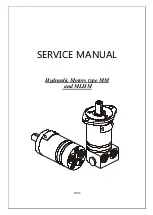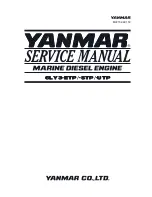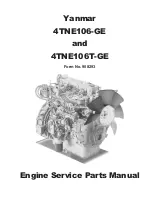
Page 296
REPAIR INSTRUCTIONS
3. Place a straightedge on the cylinder head
top rail surface, in contact with the welding
rod.
4. Mark the welding rod at the straightedge
contact point.
5. Perform the same check at an adjacent
cylinder and mark this location on the
welding rod. Compare measurements with
the original mark made at the suspect
cylinder.
r
If the H-ring at the failure cylinder is the
same height to 1/16 inch (1.574 mm)
higher as compared to that of an
adjacent cylinder, it is concluded that
no partial dislodging of the H-ring has
occurred. No further action is required.
r
If the H-ring at the failure cylinder is
1/16–1/4 inch (1.574–3.175 mm) higher
than that of an adjacent cylinder, only
partial dislodging has taken place, but
H-ring to lifter engagement was
maintained. Proceed to step 6 for
repositioning of the H-ring.
r
If the H-ring is more than 1/4 inch
(3.175 mm) higher than that of an
adjacent cylinder, it is very likely that
lifter and camshaft lobe damage has
taken place. The lobe must be
inspected and the camshaft and lifter
replaced as necessary. Proceed to
step 6 for repositioning of the H-ring.
6. Place a long screwdriver or long piece of drill
rod on the H-ring top surface and using a
cross-alternating pattern as shown in
Figure 324, carefully tap the H-ring back into
place. The depth should match that of the
adjacent unaffected cylinder as marked
previously on the welding rod.
324
Figure 324 — Alternating Pattern for H-Ring
5_106_00.bk Page 296 Friday, August 4, 2000 11:17 AM
BDC for engine manuals and specs
















































